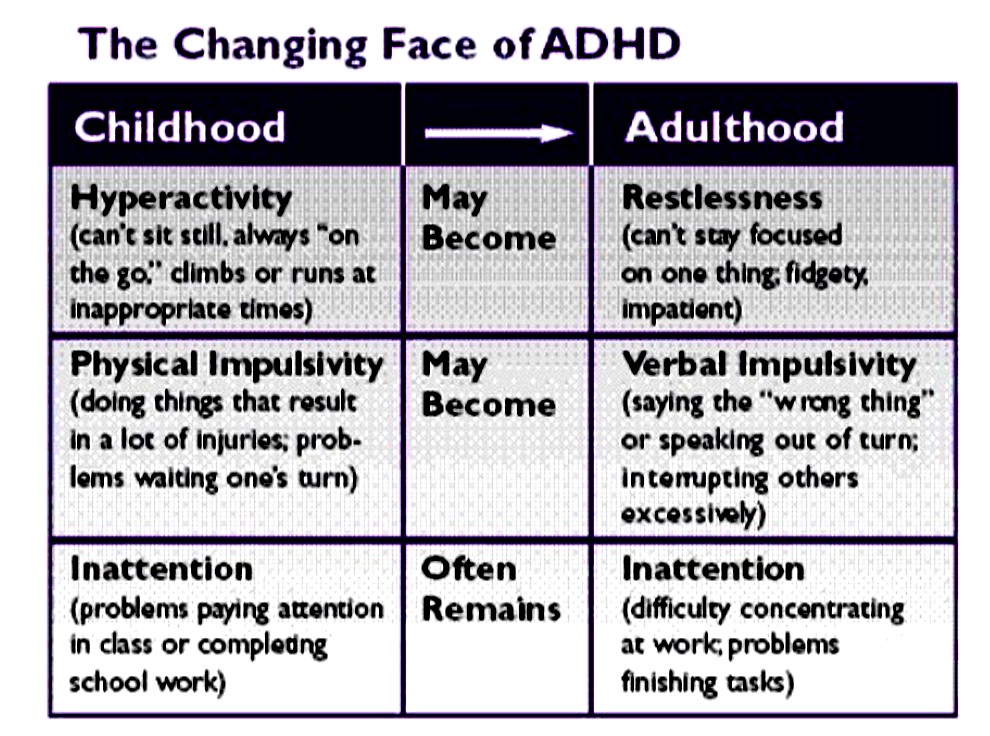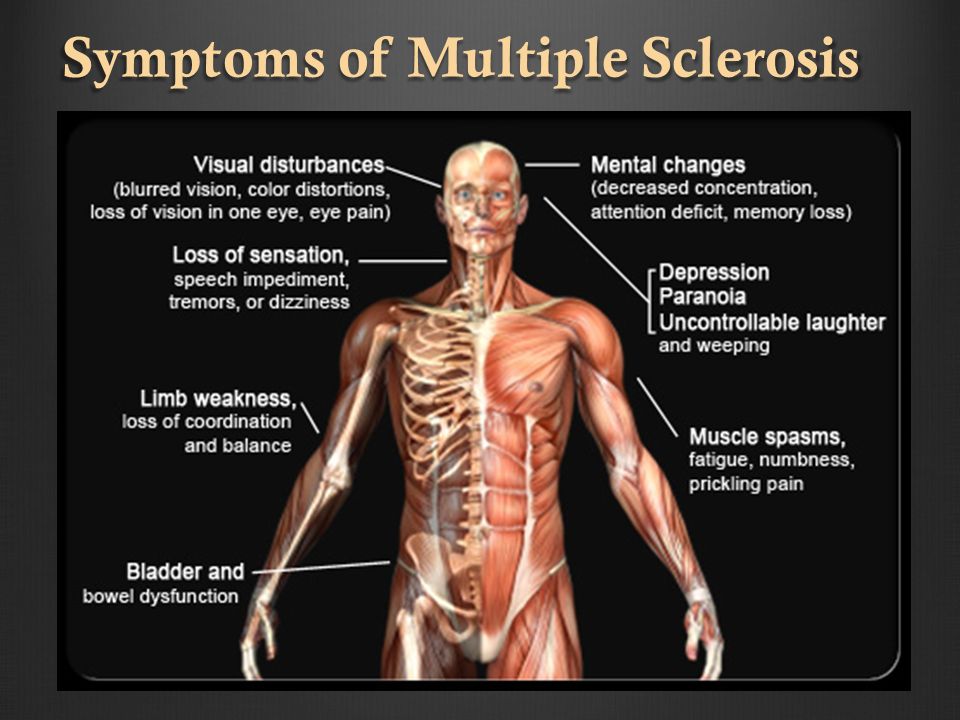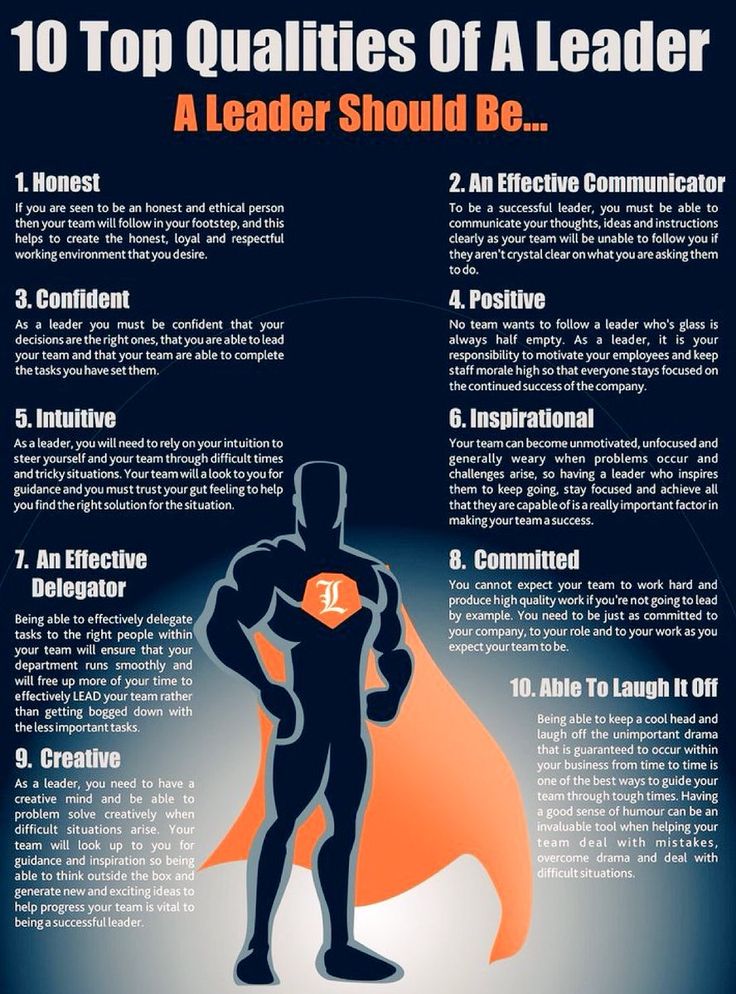Cognitive behavioral therapy techniques and strategies
Tools for Cognitive Behavioral Therapy
Cognitive behavioral therapy, or CBT, is a common form of talk therapy. Unlike some other therapies, CBT is typically intended as a short-term treatment, taking anywhere from a few weeks to a few months to see results.
Although the past is certainly relevant, CBT focuses on providing you with tools to solve your current problems. And there a lot of ways to get there with this type of therapy.
Here’s a look at some of the techniques used in CBT, what types of issues they address, and what to expect with CBT.
The key principle behind CBT is that your thought patterns affect your emotions, which, in turn, can affect your behaviors.
For instance, CBT highlights how negative thoughts can lead to negative feelings and actions. But, if you reframe your thoughts in a more positive way, it can lead to more positive feelings and helpful behaviors.
Your therapist will teach you how to make changes you can implement right now. These are skills you can continue to use for the rest of your life.
Depending on the issue you’re dealing with and your goals, there are several ways to approach CBT. Whatever approach your therapist takes, it will include:
- identifying specific problems or issues in your daily life
- becoming aware of unproductive thought patterns and how they can impact your life
- identifying negative thinking and reshaping it in a way that changes how you feel
- learning new behaviors and putting them into practice
After speaking with you and learning more about the issue you want help with, your therapist will decide on the best CBT strategies to use.
Some of the techniques that are most often used with CBT include the following 9 strategies:
1. Cognitive restructuring or reframing
This involves taking a hard look at negative thought patterns.
Perhaps you tend to over-generalize, assume the worst will happen, or place far too much importance on minor details.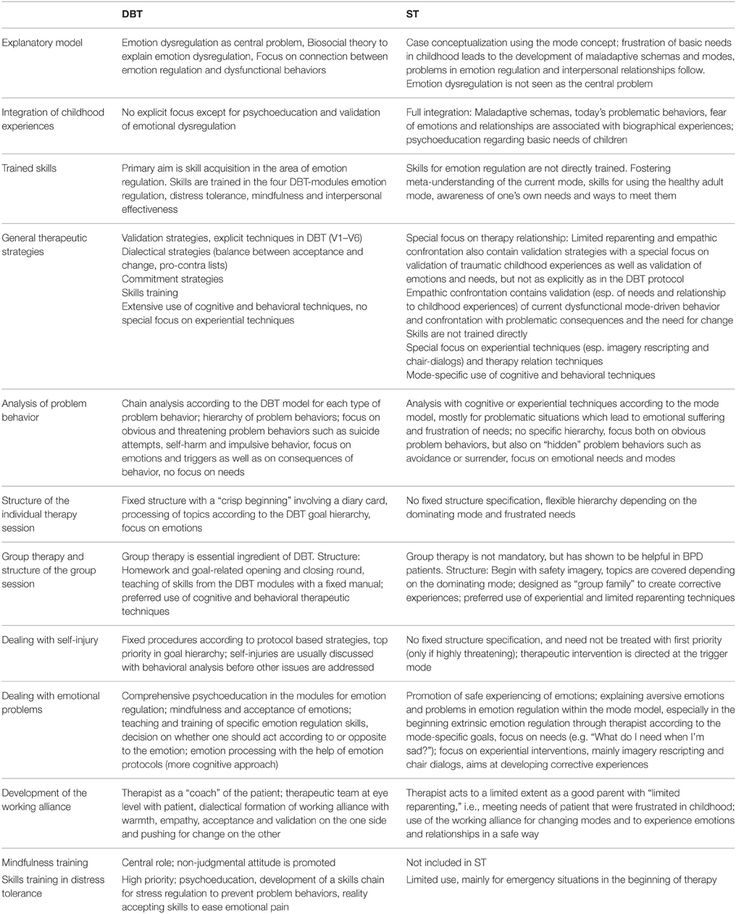 Thinking this way can affect what you do and it can even become a self-fulfilling prophecy.
Thinking this way can affect what you do and it can even become a self-fulfilling prophecy.
Your therapist will ask about your thought process in certain situations so you can identify negative patterns. Once you’re aware of them, you can learn how to reframe those thoughts so they’re more positive and productive.
For example: “I blew the report because I’m totally useless” can become “That report wasn’t my best work, but I’m a valuable employee and I contribute in many ways.”
2. Guided discovery
In guided discovery, the therapist will acquaint themselves with your viewpoint. Then they’ll ask questions designed to challenge your beliefs and broaden your thinking.
You might be asked to give evidence that supports your assumptions, as well as evidence that does not.
In the process, you’ll learn to see things from other perspectives, especially ones that you may not have considered before. This can help you choose a more helpful path.
3. Exposure therapy
Exposure therapy can be used to confront fears and phobias.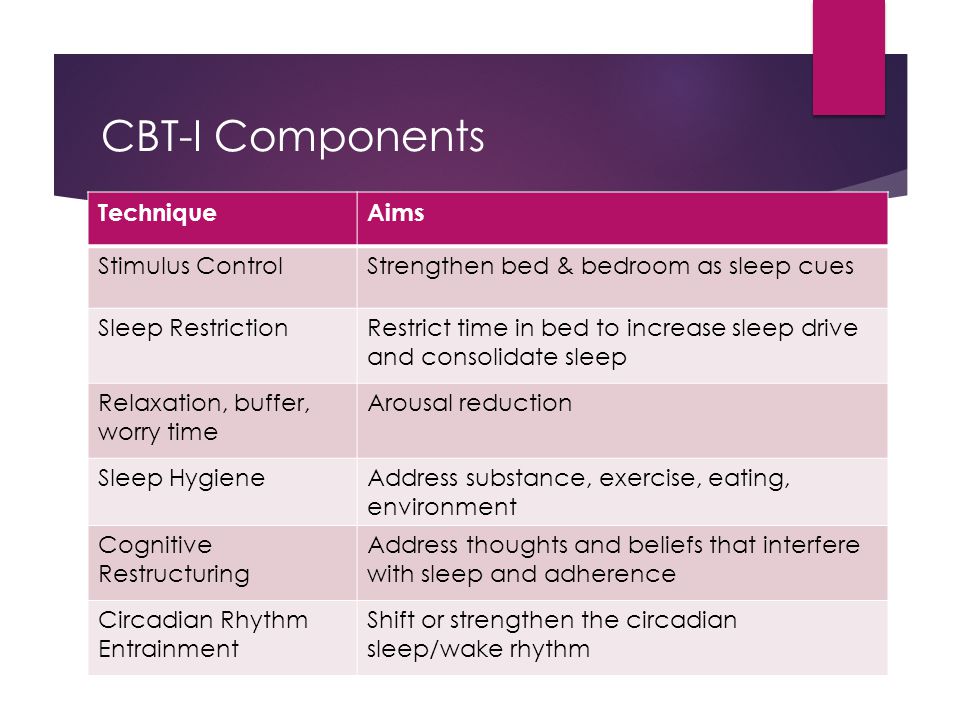 The therapist will slowly expose you to the things that provoke fear or anxiety, while providing guidance on how to cope with them in the moment.
The therapist will slowly expose you to the things that provoke fear or anxiety, while providing guidance on how to cope with them in the moment.
This can be done in small increments. Eventually, exposure can make you feel less vulnerable and more confident in your coping abilities.
4. Journaling and thought records
Writing is a time-honored way of getting in touch with your own thoughts.
Your therapist may ask you to list negative thoughts that occurred to you between sessions, as well as positive thoughts you can choose instead.
Another writing exercise is to keep track of the new thoughts and new behaviors you put into practice since the last session. Putting it in writing can help you see how far you’ve come.
5. Activity scheduling and behavior activation
If there’s an activity you tend to put off or avoid due to fear or anxiety, getting it on your calendar can help. Once the burden of decision is gone, you may be more likely to follow through.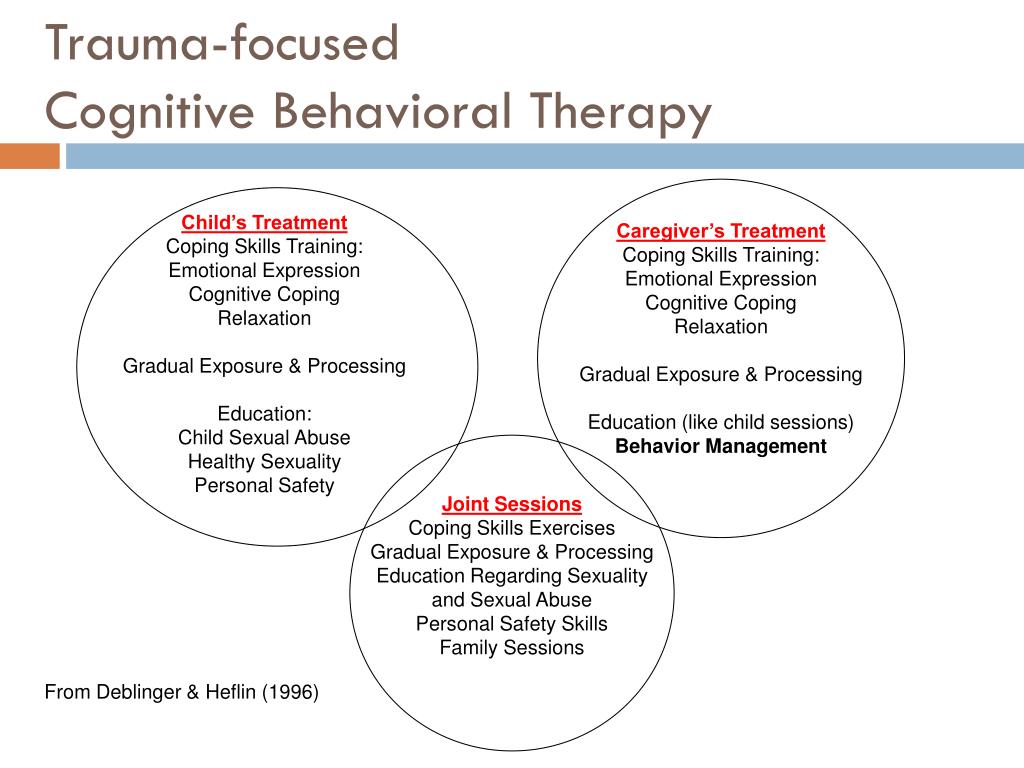
Activity scheduling can help establish good habits and provide ample opportunity to put what you’ve learned into practice.
6. Behavioral experiments
Behavioral experiments are typically used for anxiety disorders that involve catastrophic thinking.
Before embarking on a task that normally makes you anxious, you’ll be asked to predict what will happen. Later, you’ll talk about whether the prediction came true.
Over time, you may start to see that the predicted catastrophe is actually not very likely to happen. You’ll likely start with lower-anxiety tasks and build up from there.
7. Relaxation and stress reduction techniques
In CBT, you may be taught some progressive relaxation techniques, such as:
- deep breathing exercises
- muscle relaxation
- imagery
You’ll learn practical skills to help lower stress and increase your sense of control. This can be helpful in dealing with phobias, social anxieties, and other stressors.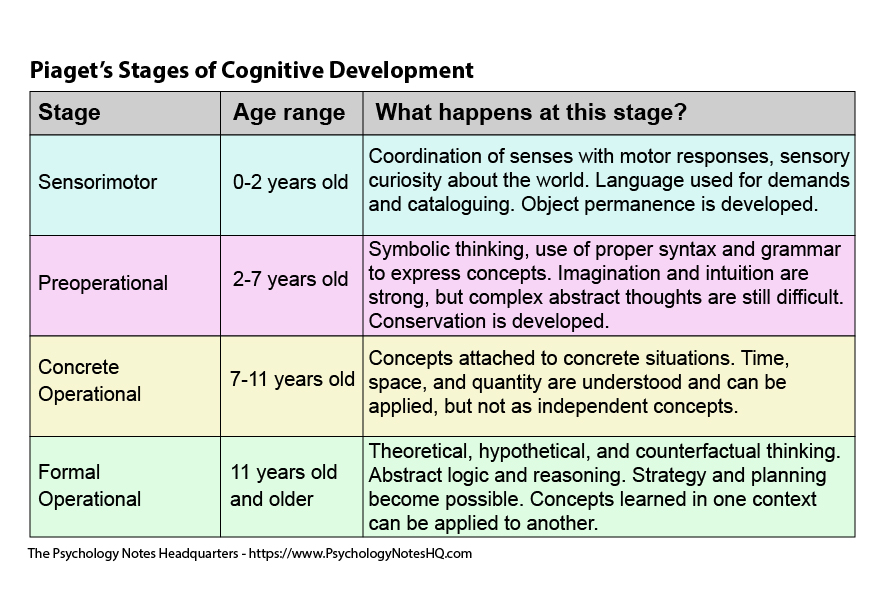
8. Role playing
Role playing can help you work through different behaviors in potentially difficult situations. Playing out possible scenarios can lessen fear and can be used for:
- improving problem solving skills
- gaining familiarity and confidence in certain situations
- practicing social skills
- assertiveness training
- improving communication skills
9. Successive approximation
This involves taking tasks that seem overwhelming and breaking them into smaller, more achievable steps. Each successive step builds upon the previous steps so you gain confidence as you go, bit by bit.
In your first session, you’ll help the therapist understand the problem you’re dealing with and what you hope to achieve with CBT. The therapist will then formulate a plan to achieve a specific goal.
Goals should be:
- Specific
- Measurable
- Achievable
- Realistic
- Time-limited
Depending on your situation and your SMART goals, the therapist might recommend individual, family, or group therapy.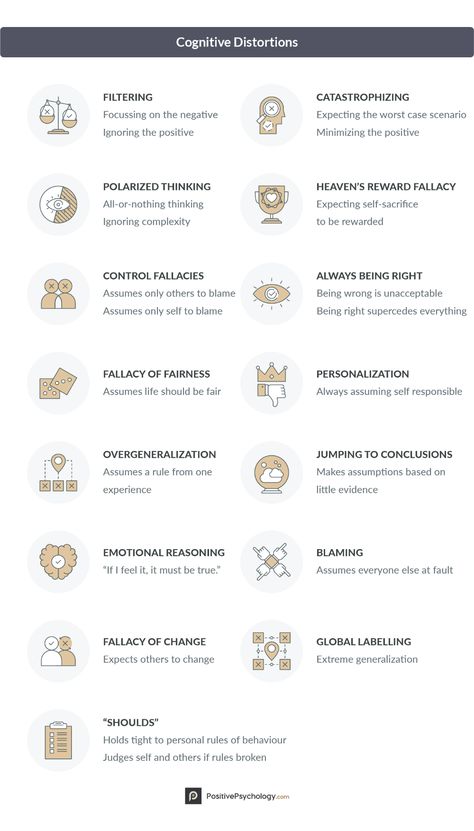
Sessions generally last about an hour and take place once a week, though this can vary according to individual needs and availability.
Homework is also part of the process, so you’ll be asked to fill out worksheets, a journal, or perform certain tasks between sessions.
Open communication and feeling comfortable with your therapist are key. If you don’t feel completely comfortable with your therapist, try to find a therapist you can connect with and open up to more easily.
Look for a therapist who’s trained in CBT and who has experience treating your specific problem. Check to make sure they’re properly certified and licensed.
You may want to talk to your doctor or other healthcare providers for recommendations. Practitioners may include:
- psychiatrists
- psychologists
- psychiatric nurse practitioners
- social workers
- marriage and family therapists
- other professionals with mental health training
Most of the time, CBT takes a few weeks to a few months to start seeing results.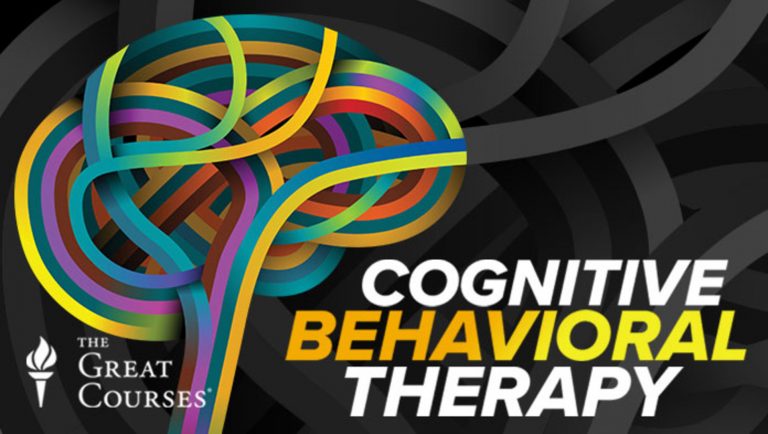
CBT can help with a variety of everyday problems, such as learning to cope with stressful situations or dealing with anxiety over a certain issue.
You don’t need a medical diagnosis to benefit from CBT.
It can also help with:
- learning to manage powerful emotions like anger, fear, or sadness
- dealing with grief
- managing symptoms or preventing mental illness relapses
- coping with physical health problems
- conflict resolution
- improving communication skills
- assertiveness training
CBT can be effective for a variety of conditions, either alone or in combination with other therapies or medications. This includes:
- addictions
- anxiety disorders
- bipolar disorders
- chronic pain
- depression
- eating disorders
- obsessive-compulsive disorder (OCD)
- phobias
- post-traumatic stress disorder (PTSD)
- schizophrenia
- sexual disorders
- sleep disorders
- tinnitus
CBT is not generally considered a risky therapy, though there are some things to keep in mind:
- It’s a very individual thing, but in the beginning, some people might find it stressful or uncomfortable to confront their problems.
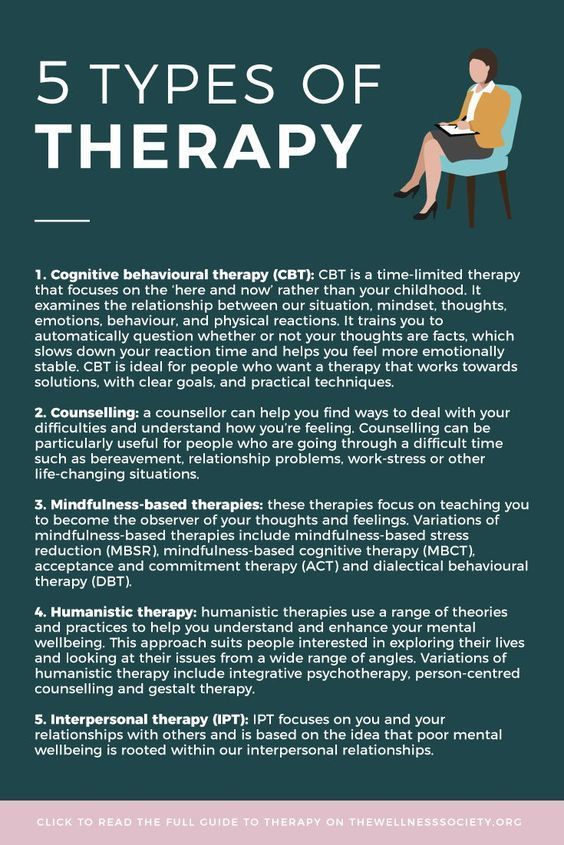
- Some types of CBT, like exposure therapy, can increase stress and anxiety while you’re working your way through it.
- It doesn’t work overnight. It takes commitment and willingness to work on new techniques between sessions and after therapy has ended. It’s helpful to think of CBT as a lifestyle change that you intend to follow and improve upon throughout your life.
Cognitive behavioral therapy (CBT) is a well-established, effective type of short-term therapy. It’s based on the connections between your thoughts, emotions, and behaviors, and how they can influence each other.
There are quite a few techniques that are used with CBT. Depending on the type of issue you want help with, your therapist will help figure out which CBT strategy is best suited to your particular needs.
Tools for Cognitive Behavioral Therapy
Cognitive behavioral therapy, or CBT, is a common form of talk therapy. Unlike some other therapies, CBT is typically intended as a short-term treatment, taking anywhere from a few weeks to a few months to see results.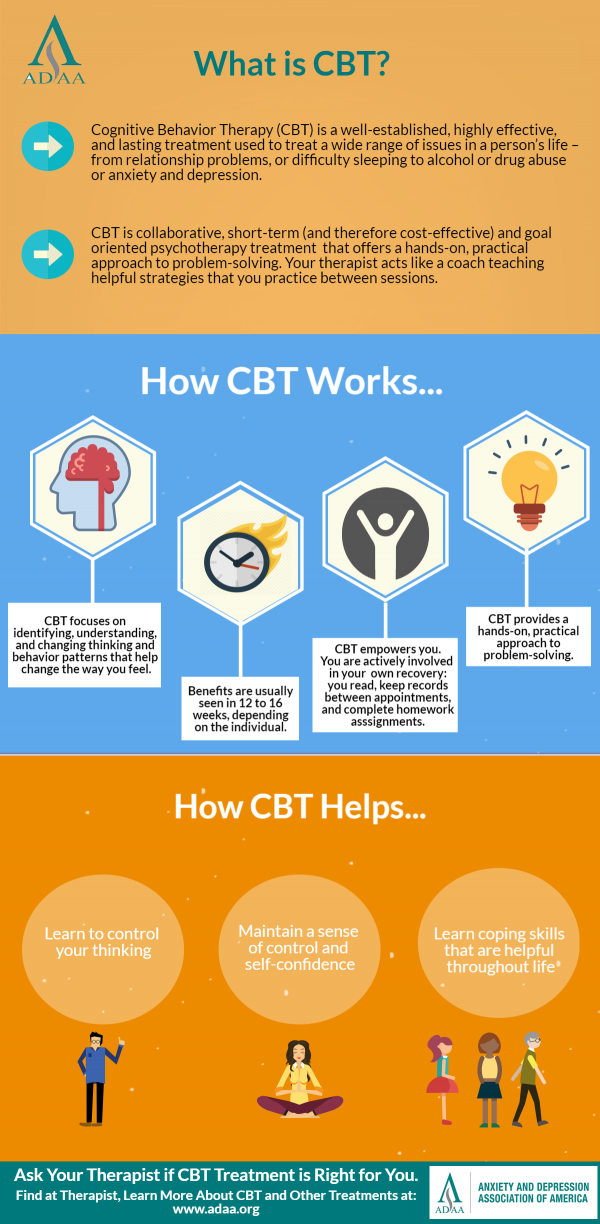
Although the past is certainly relevant, CBT focuses on providing you with tools to solve your current problems. And there a lot of ways to get there with this type of therapy.
Here’s a look at some of the techniques used in CBT, what types of issues they address, and what to expect with CBT.
The key principle behind CBT is that your thought patterns affect your emotions, which, in turn, can affect your behaviors.
For instance, CBT highlights how negative thoughts can lead to negative feelings and actions. But, if you reframe your thoughts in a more positive way, it can lead to more positive feelings and helpful behaviors.
Your therapist will teach you how to make changes you can implement right now. These are skills you can continue to use for the rest of your life.
Depending on the issue you’re dealing with and your goals, there are several ways to approach CBT. Whatever approach your therapist takes, it will include:
- identifying specific problems or issues in your daily life
- becoming aware of unproductive thought patterns and how they can impact your life
- identifying negative thinking and reshaping it in a way that changes how you feel
- learning new behaviors and putting them into practice
After speaking with you and learning more about the issue you want help with, your therapist will decide on the best CBT strategies to use.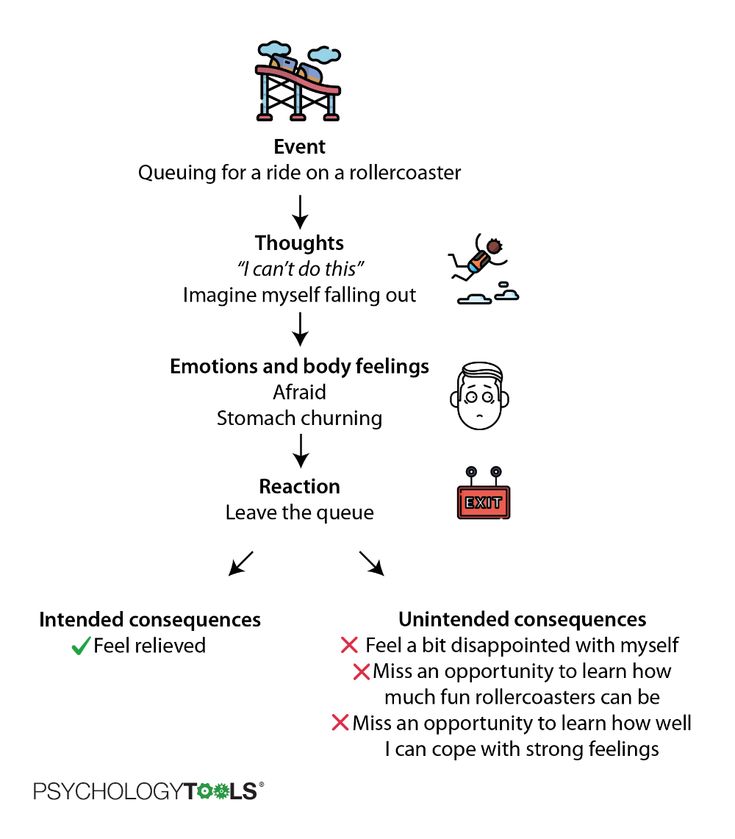
Some of the techniques that are most often used with CBT include the following 9 strategies:
1. Cognitive restructuring or reframing
This involves taking a hard look at negative thought patterns.
Perhaps you tend to over-generalize, assume the worst will happen, or place far too much importance on minor details. Thinking this way can affect what you do and it can even become a self-fulfilling prophecy.
Your therapist will ask about your thought process in certain situations so you can identify negative patterns. Once you’re aware of them, you can learn how to reframe those thoughts so they’re more positive and productive.
For example: “I blew the report because I’m totally useless” can become “That report wasn’t my best work, but I’m a valuable employee and I contribute in many ways.”
2. Guided discovery
In guided discovery, the therapist will acquaint themselves with your viewpoint. Then they’ll ask questions designed to challenge your beliefs and broaden your thinking.
You might be asked to give evidence that supports your assumptions, as well as evidence that does not.
In the process, you’ll learn to see things from other perspectives, especially ones that you may not have considered before. This can help you choose a more helpful path.
3. Exposure therapy
Exposure therapy can be used to confront fears and phobias. The therapist will slowly expose you to the things that provoke fear or anxiety, while providing guidance on how to cope with them in the moment.
This can be done in small increments. Eventually, exposure can make you feel less vulnerable and more confident in your coping abilities.
4. Journaling and thought records
Writing is a time-honored way of getting in touch with your own thoughts.
Your therapist may ask you to list negative thoughts that occurred to you between sessions, as well as positive thoughts you can choose instead.
Another writing exercise is to keep track of the new thoughts and new behaviors you put into practice since the last session.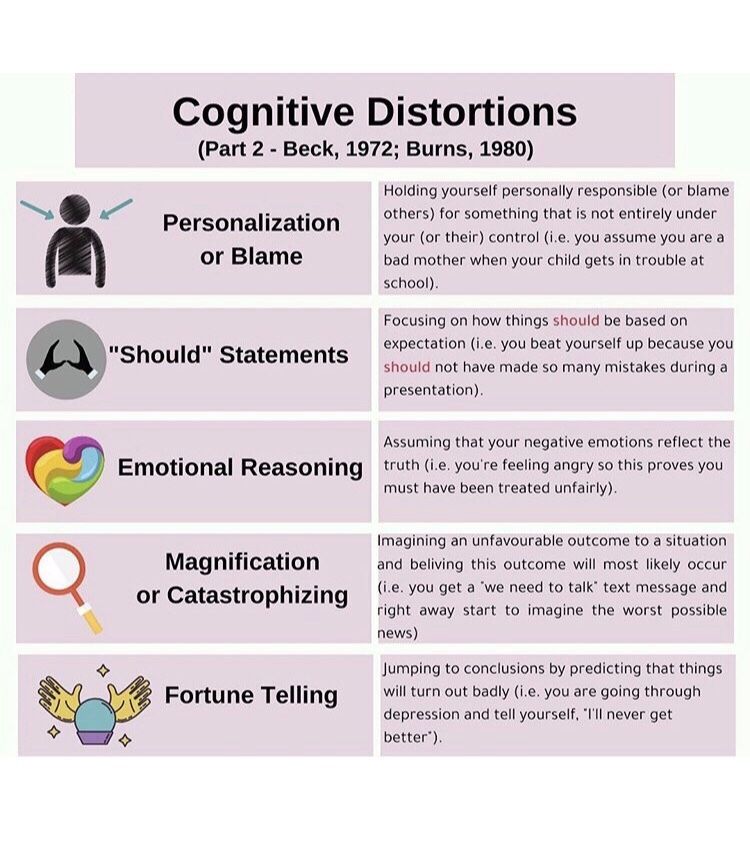 Putting it in writing can help you see how far you’ve come.
Putting it in writing can help you see how far you’ve come.
5. Activity scheduling and behavior activation
If there’s an activity you tend to put off or avoid due to fear or anxiety, getting it on your calendar can help. Once the burden of decision is gone, you may be more likely to follow through.
Activity scheduling can help establish good habits and provide ample opportunity to put what you’ve learned into practice.
6. Behavioral experiments
Behavioral experiments are typically used for anxiety disorders that involve catastrophic thinking.
Before embarking on a task that normally makes you anxious, you’ll be asked to predict what will happen. Later, you’ll talk about whether the prediction came true.
Over time, you may start to see that the predicted catastrophe is actually not very likely to happen. You’ll likely start with lower-anxiety tasks and build up from there.
7. Relaxation and stress reduction techniques
In CBT, you may be taught some progressive relaxation techniques, such as:
- deep breathing exercises
- muscle relaxation
- imagery
You’ll learn practical skills to help lower stress and increase your sense of control.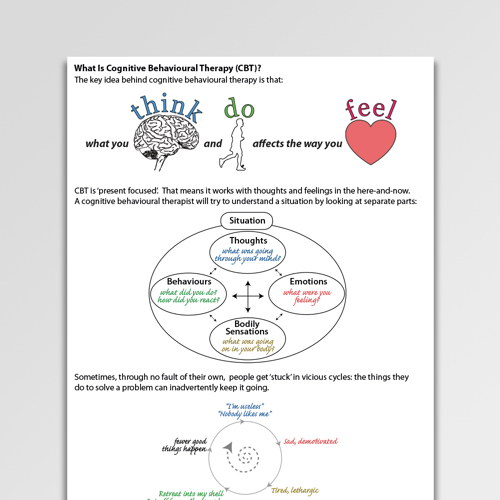 This can be helpful in dealing with phobias, social anxieties, and other stressors.
This can be helpful in dealing with phobias, social anxieties, and other stressors.
8. Role playing
Role playing can help you work through different behaviors in potentially difficult situations. Playing out possible scenarios can lessen fear and can be used for:
- improving problem solving skills
- gaining familiarity and confidence in certain situations
- practicing social skills
- assertiveness training
- improving communication skills
9. Successive approximation
This involves taking tasks that seem overwhelming and breaking them into smaller, more achievable steps. Each successive step builds upon the previous steps so you gain confidence as you go, bit by bit.
In your first session, you’ll help the therapist understand the problem you’re dealing with and what you hope to achieve with CBT. The therapist will then formulate a plan to achieve a specific goal.
Goals should be:
- Specific
- Measurable
- Achievable
- Realistic
- Time-limited
Depending on your situation and your SMART goals, the therapist might recommend individual, family, or group therapy.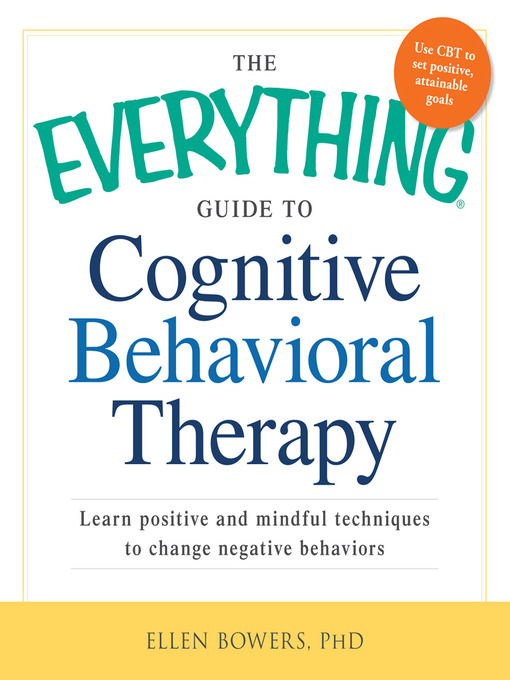
Sessions generally last about an hour and take place once a week, though this can vary according to individual needs and availability.
Homework is also part of the process, so you’ll be asked to fill out worksheets, a journal, or perform certain tasks between sessions.
Open communication and feeling comfortable with your therapist are key. If you don’t feel completely comfortable with your therapist, try to find a therapist you can connect with and open up to more easily.
Look for a therapist who’s trained in CBT and who has experience treating your specific problem. Check to make sure they’re properly certified and licensed.
You may want to talk to your doctor or other healthcare providers for recommendations. Practitioners may include:
- psychiatrists
- psychologists
- psychiatric nurse practitioners
- social workers
- marriage and family therapists
- other professionals with mental health training
Most of the time, CBT takes a few weeks to a few months to start seeing results.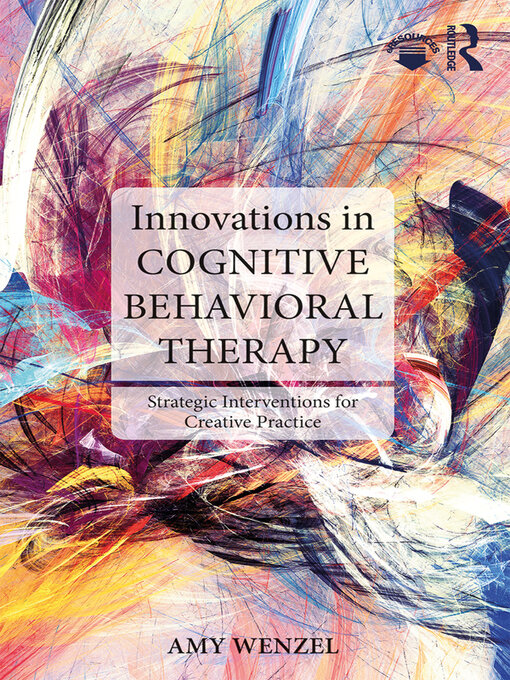
CBT can help with a variety of everyday problems, such as learning to cope with stressful situations or dealing with anxiety over a certain issue.
You don’t need a medical diagnosis to benefit from CBT.
It can also help with:
- learning to manage powerful emotions like anger, fear, or sadness
- dealing with grief
- managing symptoms or preventing mental illness relapses
- coping with physical health problems
- conflict resolution
- improving communication skills
- assertiveness training
CBT can be effective for a variety of conditions, either alone or in combination with other therapies or medications. This includes:
- addictions
- anxiety disorders
- bipolar disorders
- chronic pain
- depression
- eating disorders
- obsessive-compulsive disorder (OCD)
- phobias
- post-traumatic stress disorder (PTSD)
- schizophrenia
- sexual disorders
- sleep disorders
- tinnitus
CBT is not generally considered a risky therapy, though there are some things to keep in mind:
- It’s a very individual thing, but in the beginning, some people might find it stressful or uncomfortable to confront their problems.
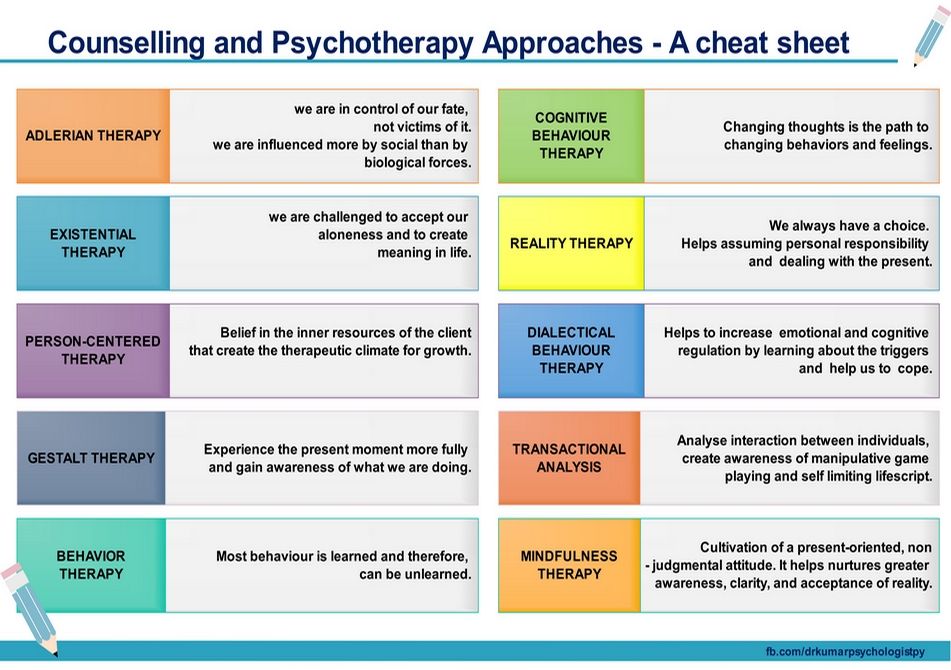
- Some types of CBT, like exposure therapy, can increase stress and anxiety while you’re working your way through it.
- It doesn’t work overnight. It takes commitment and willingness to work on new techniques between sessions and after therapy has ended. It’s helpful to think of CBT as a lifestyle change that you intend to follow and improve upon throughout your life.
Cognitive behavioral therapy (CBT) is a well-established, effective type of short-term therapy. It’s based on the connections between your thoughts, emotions, and behaviors, and how they can influence each other.
There are quite a few techniques that are used with CBT. Depending on the type of issue you want help with, your therapist will help figure out which CBT strategy is best suited to your particular needs.
Cognitive Behavioral Therapy - Effective Techniques
- Material Information
- Therapy
- Views: 192518
- Previous article Specificity of psychotherapy
- Next article Art Therapy
Set font
- Size
- Style
- Reading mode
The foundation of cognitive behavioral therapy (CBT) was laid by the eminent psychologist Albert Ellis and psychotherapist Aaron Beck.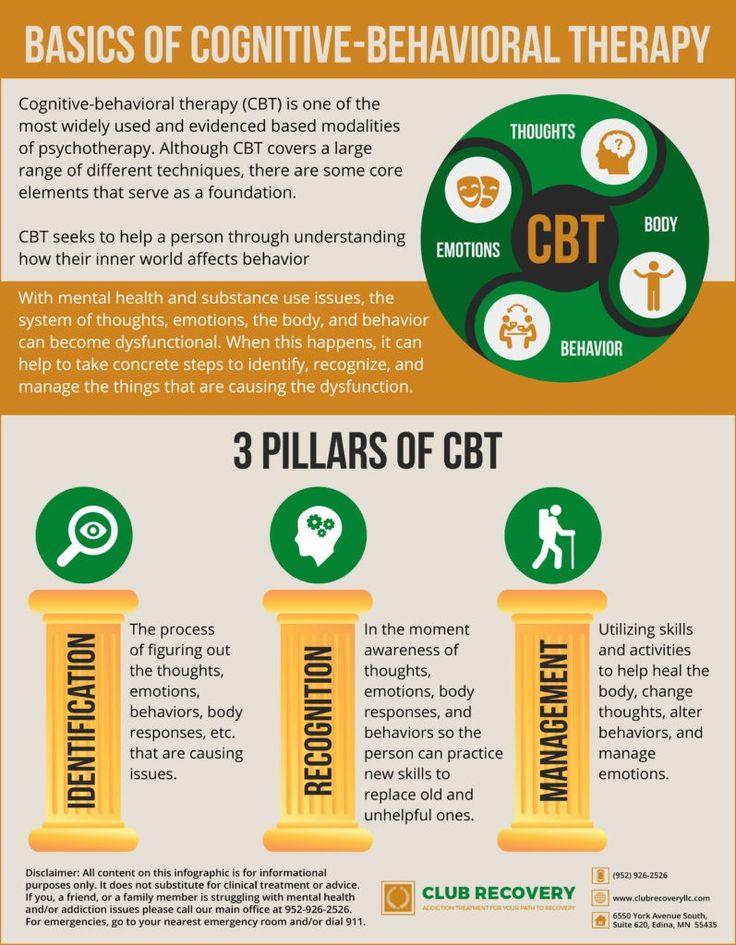
Originating in the 1960s, this technique is recognized by the academic community as one of the most effective methods of psychotherapeutic treatment. Cognitive behavioral therapy is a universal method of helping people suffering from various neurotic and mental disorders. nine0063
The authoritativeness of this concept is added by the dominant principle of the methodology - the unconditional acceptance of personality traits, a positive attitude towards each person while maintaining healthy criticism of the negative actions of the subject.
Methods of cognitive-behavioral therapy helped thousands of people who suffered from various complexes, depressive states, irrational fears. The popularity of this technique explains a combination of the obvious advantages of CBT:
- a guarantee of achieving high results and a complete solution to the existing problem;
- long-term, often life-long persistence of the effect obtained;
- short course of therapy;
- comprehensibility of exercises for an ordinary citizen;
- simplicity of tasks;
- the ability to perform the exercises recommended by the doctor on your own in the comfort of your own home;
- a wide range of applications of techniques, the ability to use to overcome various psychological problems; nine0023
- no side effects;
- atraumatic and safe;
- the use of hidden resources of the body to solve the problem.
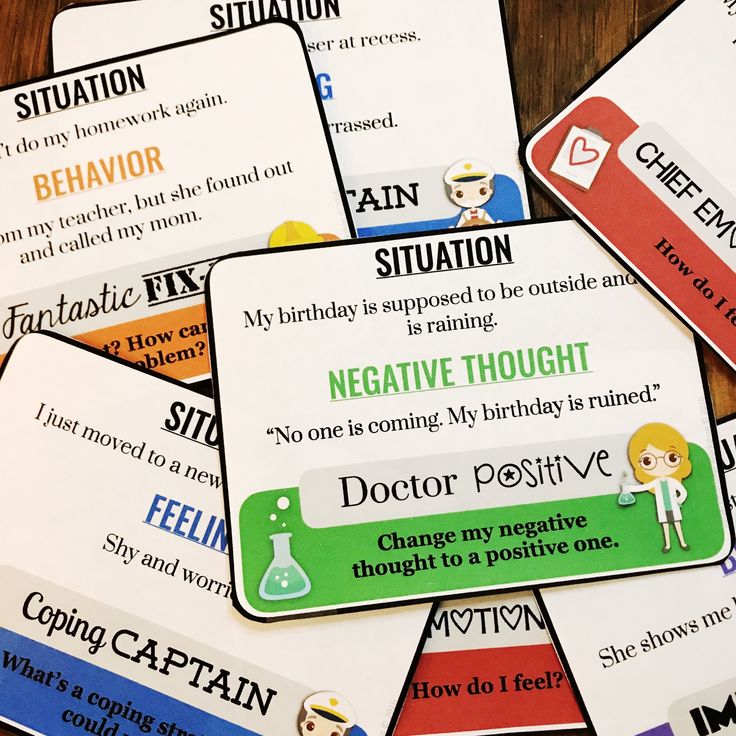
Cognitive behavioral therapy has shown good results in the treatment of various neurotic and psychotic disorders. CBT methods are used in the treatment of affective and anxiety disorders, obsessive compulsive disorder, problems in the intimate sphere, and eating disorders. CBT techniques bring excellent results in the treatment of alcoholism, drug addiction, gambling, and psychological addictions. nine0063
General information
One of the features of cognitive-behavioral therapy is the division and systematization of all emotions of a person into two broad groups:
- productive, also called rational or functional;
- unproductive, called irrational or dysfunctional.
The group of unproductive emotions includes destructive experiences of an individual, which, according to the concept of CBT, are the result of irrational (illogical) beliefs and beliefs of a person - “irrational beliefs”. According to supporters of cognitive-behavioral therapy, all unproductive emotions and the dysfunctional model of personality behavior associated with it are not a reflection or result of the subject's personal experience.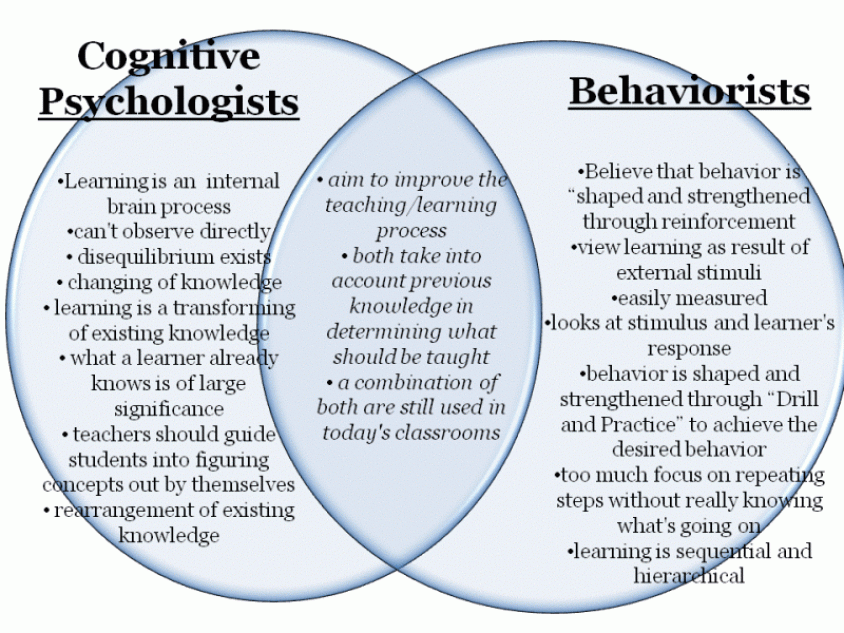 All irrational components of thinking and the non-constructive behavior associated with them are the result of a person's incorrect, distorted interpretation of their real experience. According to the authors of the methodology, the real culprit of all psycho-emotional disorders is the distorted and destructive belief system present in the individual, which was formed as a result of the wrong beliefs of the individual. nine0063
All irrational components of thinking and the non-constructive behavior associated with them are the result of a person's incorrect, distorted interpretation of their real experience. According to the authors of the methodology, the real culprit of all psycho-emotional disorders is the distorted and destructive belief system present in the individual, which was formed as a result of the wrong beliefs of the individual. nine0063
These ideas form the foundation of cognitive-behavioral therapy, the main concept of which is the following: the emotions, feelings and behavior of the subject are not determined by the situation in which he is, but by how he perceives the current situation. From these considerations comes the dominant strategy of CBT - to identify and identify dysfunctional experiences and stereotypes, then replace them with rational, useful, realistic feelings, taking full control of your train of thought. nine0063
By changing the personal attitude to some factor or phenomenon, replacing a rigid, rigid, non-constructive life strategy with flexible thinking, a person will acquire an effective worldview.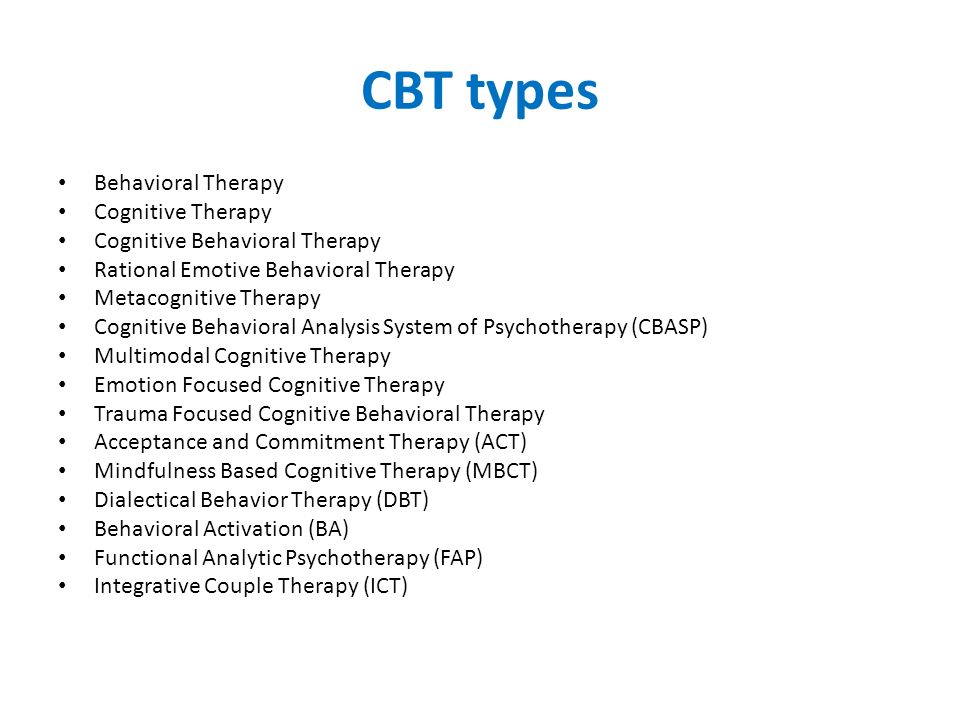
The functional emotions that have arisen will improve the psycho-emotional state of the individual and ensure excellent well-being under any life circumstances. On this basis, a conceptual model of cognitive-behavioral therapy was formulated , presented in an easy-to-understand ABC formula, where:
- A (activating event) - some event occurring in reality, which is a stimulus for the subject;
- B (belief) - the system of personal beliefs of an individual, a cognitive structure that reflects the process of a person's perception of an event in the form of emerging thoughts, formed ideas, formed beliefs;
- C (emotional consequences) - final results, emotional and behavioral consequences.
Cognitive-behavioral therapy is focused on the identification and subsequent transformation of distorted components of thinking, which ensures the formation of a functional strategy for the behavior of the individual.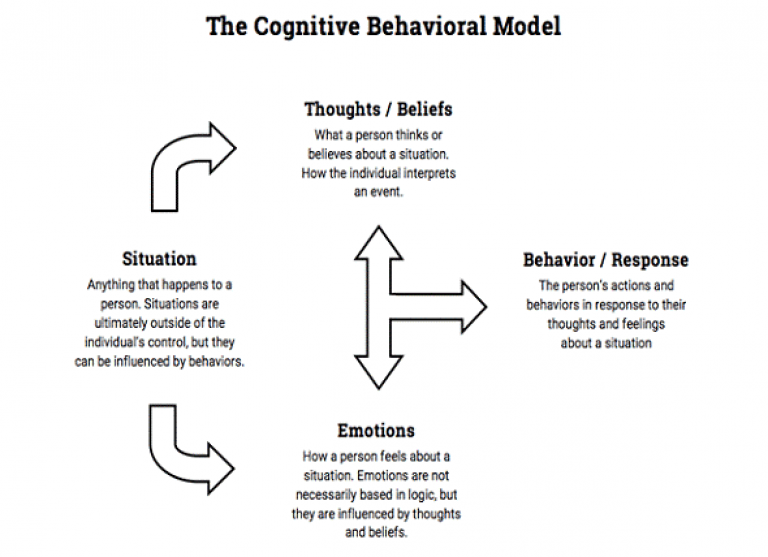 nine0063
nine0063
Treatment process
The treatment process using cognitive behavioral therapy techniques is a short course of 10 to 20 sessions. Most patients visit a therapist no more than twice a week. After a face-to-face meeting, clients are given a small “homework assignment”, which includes the performance of specially selected exercises and additional acquaintance with educational literature.
CBT treatment involves the use of two groups of techniques: behavioral and cognitive. nine0101
Let's consider cognitive techniques in more detail. They are aimed at detecting and correcting dysfunctional thoughts, beliefs, ideas. It should be noted that irrational emotions impede the normal functioning of a person, change a person’s thinking, force them to make and follow illogical decisions. Going off scale in amplitude, affective unproductive feelings lead to the fact that the individual sees reality in a distorted light. Dysfunctional emotions deprive a person of control over himself, force him to commit reckless acts.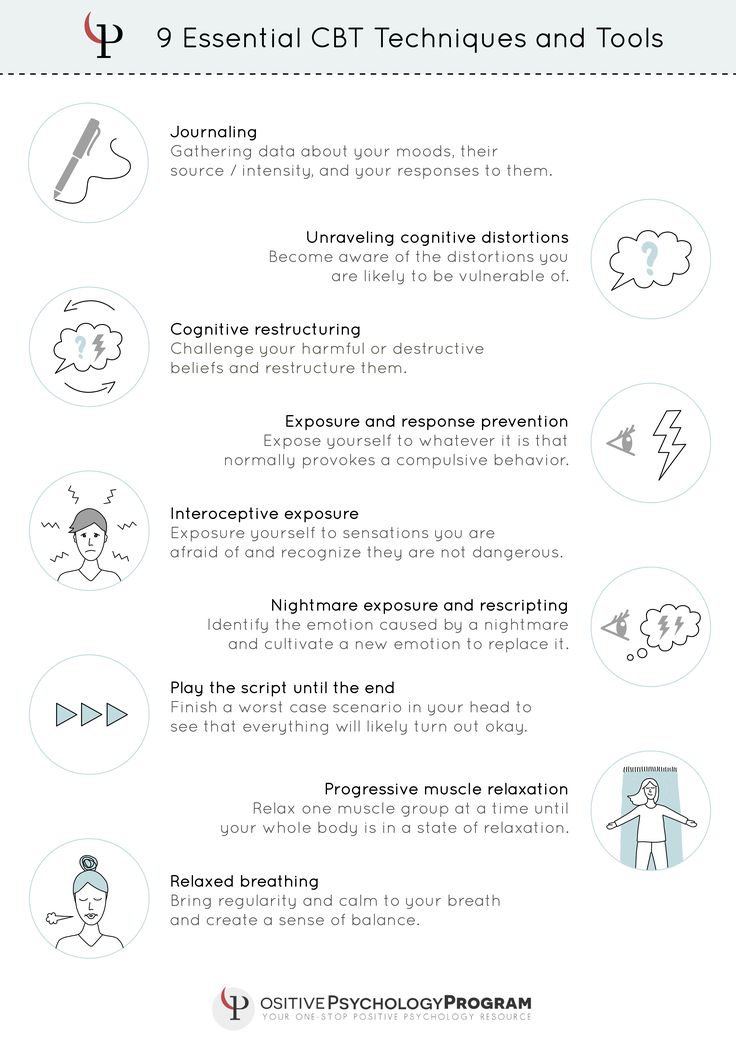 nine0063
nine0063
Cognitive techniques are conditionally divided into several groups.
Group one
The purpose of the techniques of the first group is to track and become aware of one's own thoughts. For this, the following methods are most often used.
Recordings of one's own thoughts
The patient receives the task: to state on a piece of paper the thoughts that arise before and during the performance of any action. In this case, it is necessary to fix thoughts strictly in the order of their priority. This step will indicate the significance of certain motives of a person when making a decision. nine0063
Keeping a diary of thoughts
The client is advised to briefly, concisely and accurately record all thoughts that arise in a diary for several days. This action will allow you to find out what a person thinks about most often, how much time he spends thinking about these thoughts, how much he is disturbed by certain ideas.
Distance from non-functional thoughts
The essence of the exercise is that a person must develop an objective attitude towards his own thoughts. In order to become an impartial "observer", he needs to move away from emerging ideas. Detachment from one's own thoughts has three components:
- awareness and acceptance of the fact that a non-constructive thought arises automatically, an understanding that the idea that is overcoming now was formed earlier under certain circumstances, or that it is not its own product of thinking, but is imposed from outside by extraneous subjects;
- awareness and acceptance that stereotyped thoughts are non-functional and interfere with normal adaptation to existing conditions;
- doubt about the truth of the emerging non-adaptive idea, since such a stereotypical construct contradicts the existing situation and does not correspond in its essence to the emerging requirements of reality.
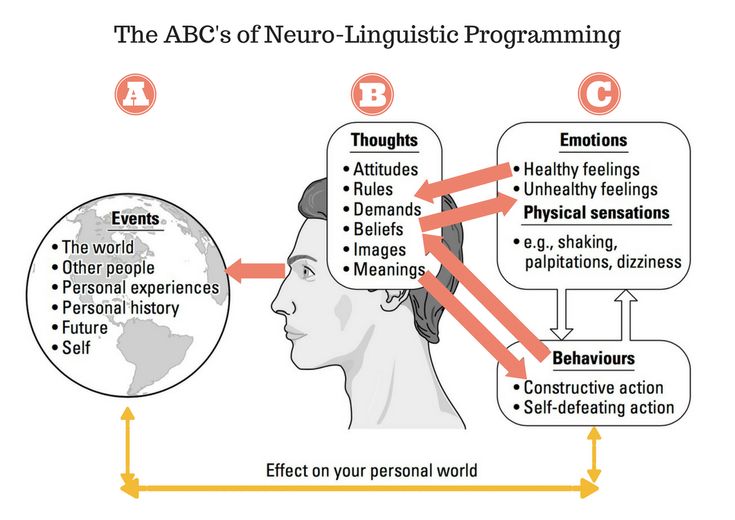 nine0023
nine0023
Second group
The task of the technicians from the second group is to challenge existing non-functional thoughts. To do this, the patient is asked to perform the following exercises.
Examining arguments for and against stereotypical thoughts
A person examines his own maladaptive thought and writes down on paper the arguments for and against. The patient is then instructed to reread their notes daily. With regular exercise in the mind of a person, over time, the “correct” arguments will be firmly fixed, and the “wrong” ones will be eliminated from thinking. nine0063
Weighing advantages and disadvantages
This exercise is not about analyzing your own non-constructive thoughts, but about studying existing solutions. For example, a woman makes a comparison of what is more important for her: to maintain her own safety by not coming into contact with persons of the opposite sex, or to allow a share of risk in her life in order to eventually create a strong family.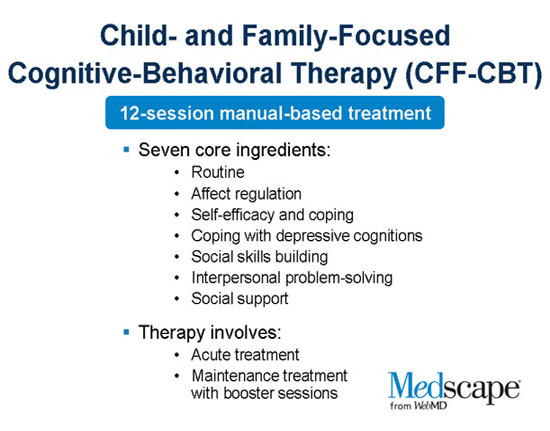
Experiment
This exercise provides that a person experimentally, on personal experience, comprehends the result of demonstrating one or another emotion. For example, if the subject does not know how society reacts to the manifestation of his anger, he is allowed to express his emotion in full force, directing it to the therapist. nine0063
Return to the past
The essence of this step is a frank conversation with impartial witnesses of past events that left a mark on the human psyche. This technique is especially effective in disorders of the mental sphere, in which memories are distorted. This exercise is relevant for those who have delusions that have arisen as a result of an incorrect interpretation of the motives that move other people.
Use of authoritative sources of information
This step involves giving the patient arguments drawn from scientific literature, official statistics, personal experience of the doctor.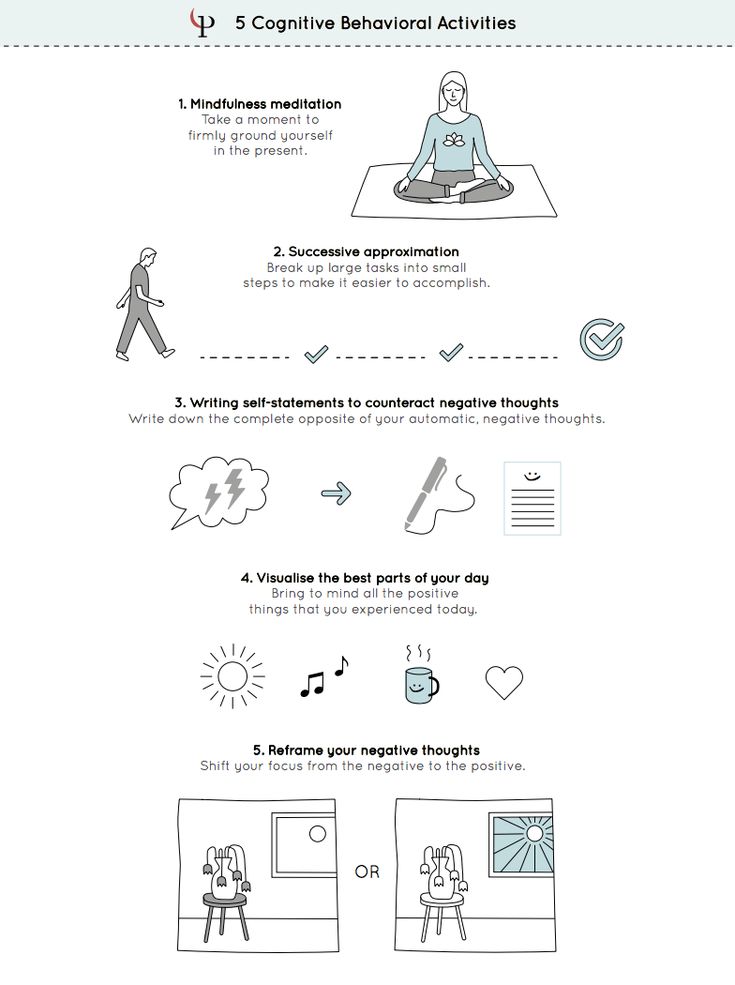 For example, if a patient is afraid of air travel, the therapist points him to objective international reports, according to which the number of accidents when using airplanes is much lower compared to disasters that occur on other modes of transport.
For example, if a patient is afraid of air travel, the therapist points him to objective international reports, according to which the number of accidents when using airplanes is much lower compared to disasters that occur on other modes of transport.
Socratic method (Socratic dialogue)
The doctor's task is to identify and point out to the client logical errors and obvious contradictions in his reasoning. For example, if the patient is convinced that he is destined to die from a spider bite, but at the same time declares that he has already been bitten by this insect before, the doctor points out a contradiction between anticipation and the real facts of personal history.
Change of mind - reassessment of facts
The purpose of this exercise is to change the person's current view of an existing situation by testing whether alternative causes of the same event would have the same effect. For example, the client is invited to reflect and discuss whether this or that person could have done the same to him if she had been guided by other motives.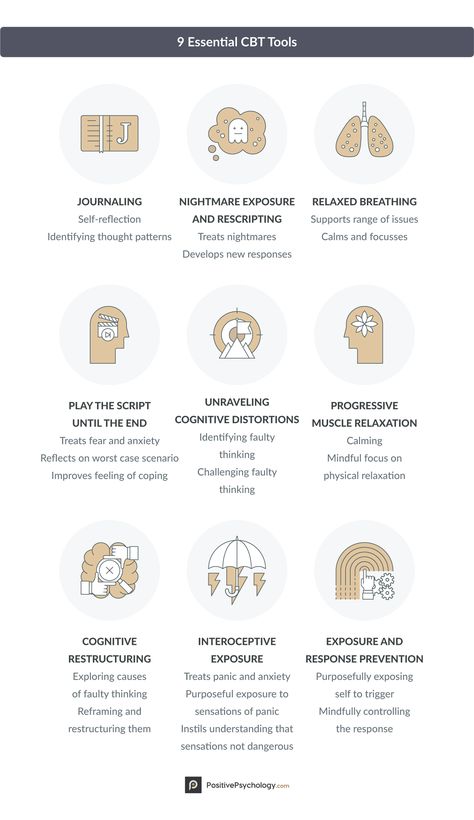 nine0063
nine0063
Downscaling - decatastrophe
This technique involves the development of a non-adaptive thought of the patient to a global scale for the subsequent devaluation of its consequences. For example, to a person who is terrified of leaving his own home, the doctor asks questions: “In your opinion, what will happen to you if you go outside?”, “How much and for how long will negative feelings overcome you?”, “What will happen next? Are you going to have a seizure? Are you dying? Will people die? The planet will end its existence? A person understands that his fears in a global sense are not worth attention. Awareness of the temporal and spatial framework helps to eliminate the fear of the imagined consequences of a disturbing event. nine0063
Softening the intensity of emotions
The essence of this technique is to conduct an emotional reassessment of a traumatic event. For example, the injured person is asked to summarize the situation by saying to herself the following: “It is very unfortunate that such a fact took place in my life. However, I will not allow
However, I will not allow
this event will control my present and ruin my future. I'm leaving the trauma in the past." That is, the destructive emotions that arise in a person lose their power of affect: resentment, anger and hatred are transformed into softer and more functional experiences. nine0063
Role change
This technique consists of an exchange of roles between the doctor and the client. The task of the patient is to convince the therapist that his thoughts and beliefs are maladaptive. Thus, the patient himself is convinced of the dysfunctionality of his judgments.
Postponing ideas
This exercise is suitable for those patients who cannot give up their impossible dreams, unrealistic desires and unrealistic goals, but thinking about them makes him uncomfortable. The client is invited to postpone the implementation of his ideas for a long time, while specifying a specific date for their implementation, for example, the occurrence of a certain event.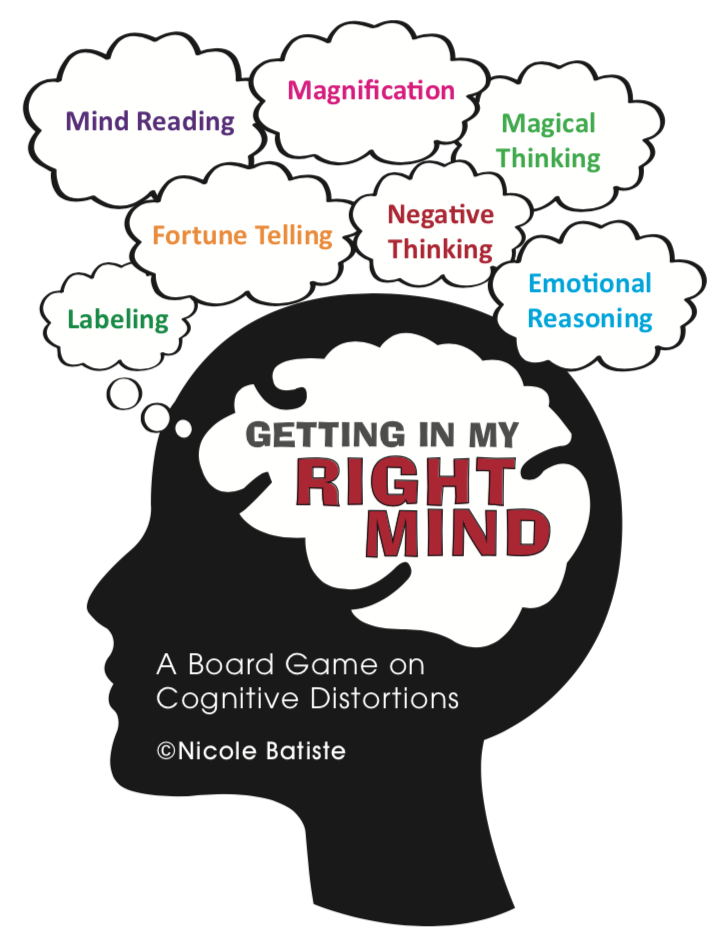 The expectation of this event eliminates psychological discomfort, thereby making a person's dream more achievable. nine0063
The expectation of this event eliminates psychological discomfort, thereby making a person's dream more achievable. nine0063
Drawing up an action plan for the future
The client, together with the doctor, develops an adequate realistic program of actions for the future, in which specific conditions are specified, the actions of a person are determined, and step-by-step deadlines for completing tasks are set. For example, the therapist and the patient agree that in the event of a critical situation, the client will follow a certain sequence of actions. And until the onset of a catastrophic event, he will not exhaust himself with disturbing experiences at all. nine0063
Group three
The third group of techniques is focused on activating the sphere of the individual's imagination. It has been established that the dominant position in thinking of anxious people is not occupied by “automatic” thoughts at all, but by obsessive frightening images and exhausting destructive ideas.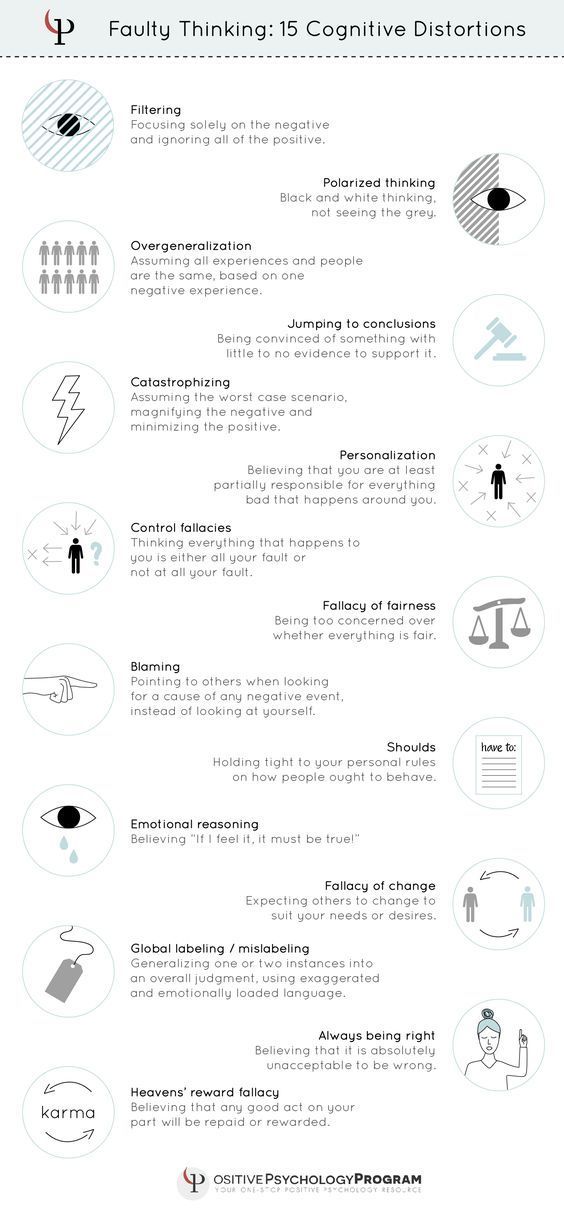 Based on this, therapists have developed special techniques that act on the correction of the area of imagination.
Based on this, therapists have developed special techniques that act on the correction of the area of imagination.
Termination method
When a client has an obsessive negative image, he is advised to utter a conditional laconic command in a loud and firm voice, for example: “Stop!”. Such an indication terminates the action of the negative image. nine0063
Repetition method
This technique involves the patient repeatedly repeating settings that are characteristic of a productive way of thinking. Thus, over time, the formed negative stereotype is eliminated.
Use of metaphors
To activate the sphere of the patient's imagination, the doctor uses appropriate metaphorical statements, instructive parables, quotations from poetry. This approach makes the explanation more colorful and understandable. nine0063
Image modification
The method of modifying imagination involves the active work of the client, aimed at gradually replacing destructive images with ideas of a neutral color, and then with positive constructs.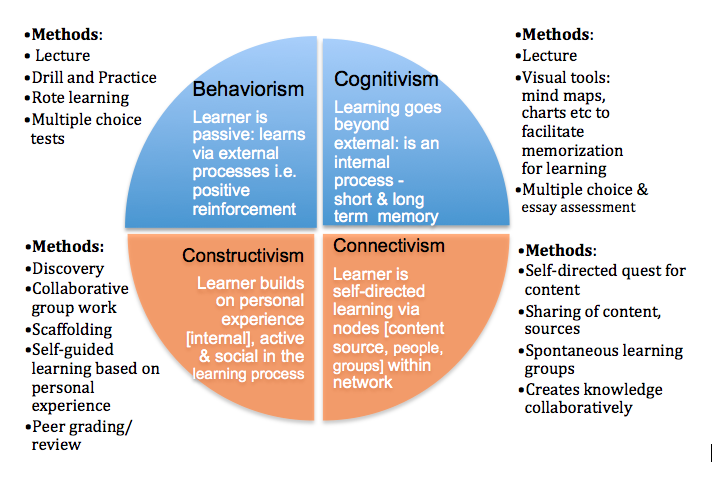
Positive imagination
This technique involves the replacement of a negative image with positive ideas, which has a pronounced relaxing effect.
Constructive imagination
The desensitization technique consists in the fact that a person ranks the probability of an expected catastrophic situation, that is, he establishes and orders the expected future events in order of importance. This step leads to the fact that the negative forecast loses its global significance and is no longer perceived as inevitable. For example, a patient is asked to rank the probability of death when meeting with an object of fear.
Fourth group
Techniques from this group are aimed at increasing the effectiveness of the treatment process and minimizing the resistance of the client.
Purposeful repetition
The essence of this technique is persistent repeated testing of various positive instructions in personal practice.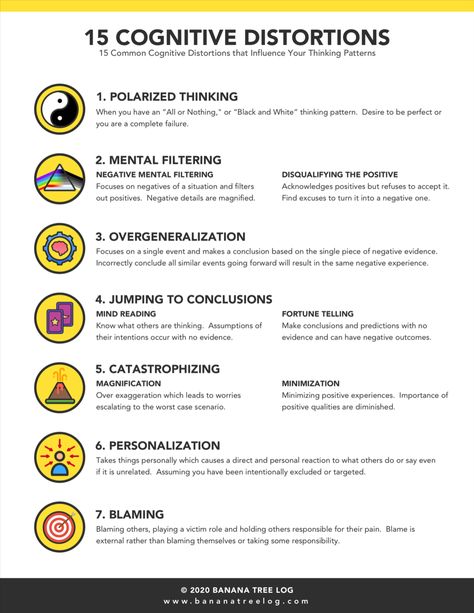 For example, after reassessing one's own thoughts during psychotherapeutic sessions, the patient is given the task: to independently reassess the ideas and experiences that arise in everyday life. This step will ensure a stable consolidation of the positive skill gained in the course of therapy. nine0063
For example, after reassessing one's own thoughts during psychotherapeutic sessions, the patient is given the task: to independently reassess the ideas and experiences that arise in everyday life. This step will ensure a stable consolidation of the positive skill gained in the course of therapy. nine0063
Identification of hidden motives of destructive behavior
This technique is appropriate in situations where a person continues to think and act in an illogical way, despite the fact that all the "correct" arguments are stated, he agrees with them and fully accepts them.
As hypnotherapist Gennady Ivanov notes on classicalhypnosis.ru, in this case, the task of therapy is to find the hidden motives of his destructive behavior and establish alternative motives for a person's dysfunctional actions. nine0063
Other branches of psychotherapy refer to this exercise as the search for secondary gain .
- Previous article Specificity of psychotherapy
- Next article Art Therapy
Goals and main strategies of cognitive therapy.
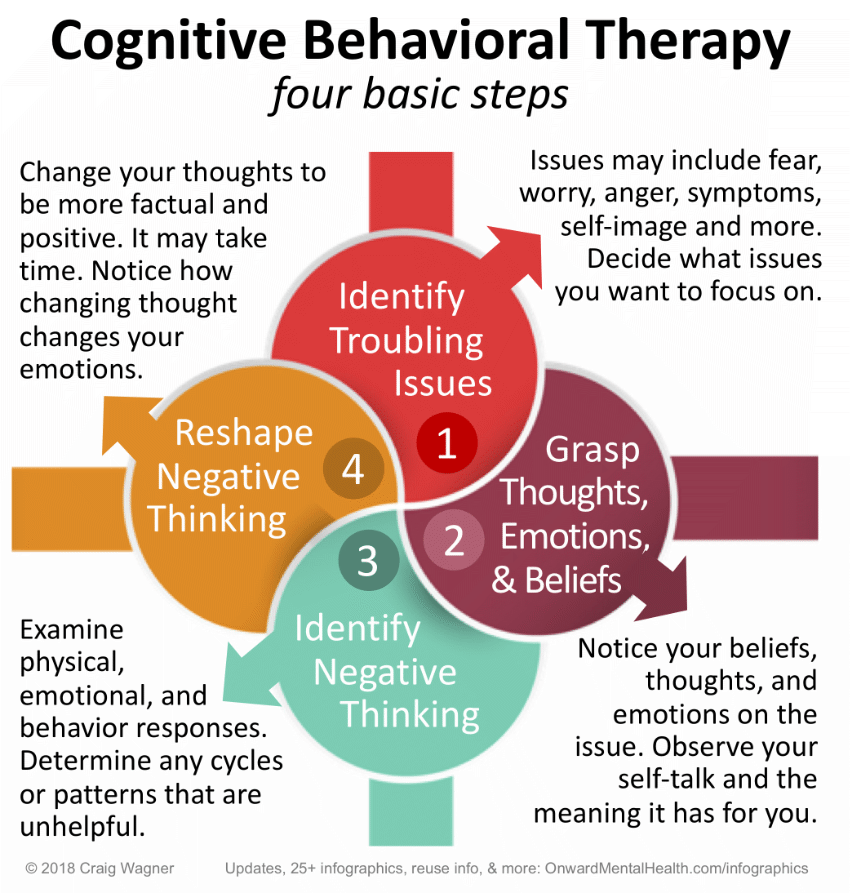 Integrative psychotherapy Goals and main strategies of cognitive therapy. Integrative Psychotherapy nine0062 WikiReading
Integrative psychotherapy Goals and main strategies of cognitive therapy. Integrative Psychotherapy nine0062 WikiReading Integrative psychotherapy
Aleksandrov Artur Aleksandrovich
Contents
Goals and main strategies for cognitive therapy
The goals of cognitive therapy are to correct erroneous information processing and to help patients modify beliefs that support maladaptive behaviors and emotions. Cognitive therapy initially aims to relieve the symptom, including problematic behavior and logical distortions, but its ultimate goal is to eliminate systematic biases in thinking. nine0063
Cognitive therapy considers the patient's beliefs as hypotheses that can be tested with a behavioral experiment; A behavioral experiment is a test of distorted beliefs or fears in real life situations. The cognitive therapist does not tell the patient that his beliefs are irrational or wrong, or that he needs to accept the therapist's beliefs.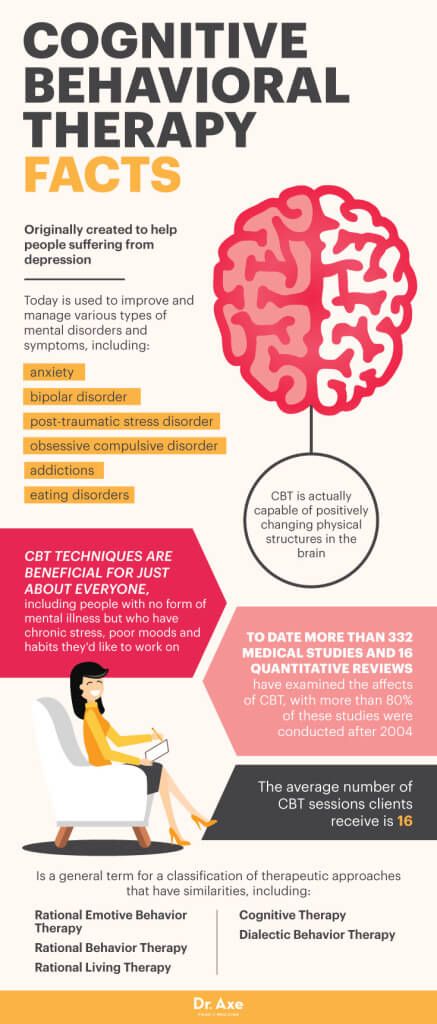 Instead, the therapist asks questions to extract information about the meaning, function, and consequences of the patient's beliefs, and then the patient decides whether to reject, modify, or retain his beliefs, having previously recognized their emotional and behavioral consequences. nine0063
Instead, the therapist asks questions to extract information about the meaning, function, and consequences of the patient's beliefs, and then the patient decides whether to reject, modify, or retain his beliefs, having previously recognized their emotional and behavioral consequences. nine0063
Cognitive therapy is designed to teach patients to:
a) control dysfunctional (irrational) automatic thoughts;
b) be aware of the connections between cognitions, affects and behavior;
c) study arguments for and against dysfunctional automatic thoughts;
d) replace dysfunctional automatic thoughts with more realistic interpretations;
e) identify and change beliefs that predispose to experience distortion. nine0063
Cognitive therapy uses cognitive and behavioral techniques to address these challenges.
A. Beck formulates the three main strategies of cognitive therapy: collaboration empiricism, Socratic dialogue, and guided discovery.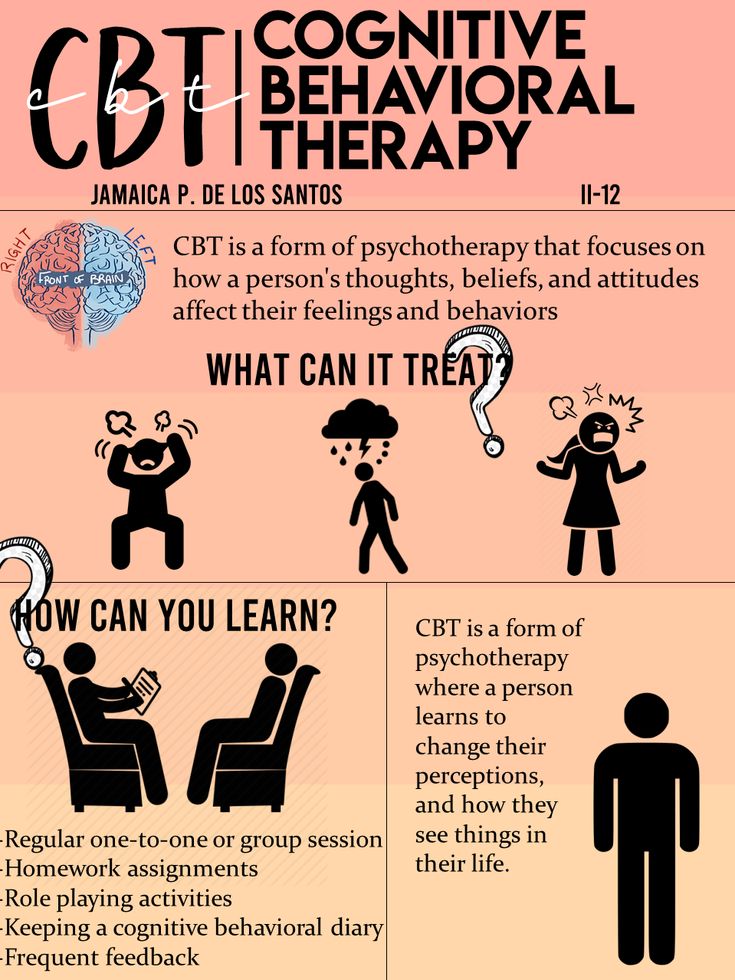
The empiricism of collaboration lies in the fact that therapist and patient are collaborators in the exploration of facts that support or refute the patient's cognitions. As in scientific research, interpretations or assumptions are treated as hypotheses that need to be tested. nine0063
Empirical evidence is used to determine whether cognition data serves any useful purpose. Initial conclusions are subjected to logical analysis. Prejudice thinking will become apparent to the patient as he becomes aware of alternative sources of information. This process is a partnership between patient and therapist.
Socratic dialogue. Conversation is the main therapeutic tool in cognitive therapy, and the Socratic type of dialogue is widely used. The therapist carefully crafts questions to ensure new learning. The purposes of these questions are as follows: 1) to clarify or define problems; 2) help the patient identify thoughts, images, assumptions; 3) to study the meaning of events for the patient; 4) evaluate the consequences of maintaining maladaptive thoughts and behaviors. nine0063
nine0063
Recall that the essence of Socratic dialogue is that the patient comes to logical conclusions based on the questions the therapist asks. Questions are not used to "trap" the patient, to lead him to an inevitable conclusion; they are set so that the patient can look at his assumptions objectively, without resorting to defense.
Guided opening. Through guided discovery, the patient modifies maladaptive beliefs and assumptions. The therapist serves as a "guide": she clarifies problematic behaviors and logical fallacies, creating new experiences through behavioral experiments. This experience leads to the acquisition of new skills and attitudes. Through cognitive and behavioral methods, the patient discovers adaptive ways of thinking and behaving. The patient learns to correct erroneous cognitive processing so that he eventually becomes independent of the therapist. Guided discovery implies that the therapist does not challenge the patient to accept a new set of beliefs; the therapist encourages the patient to use information, facts, and opportunities to form a realistic view.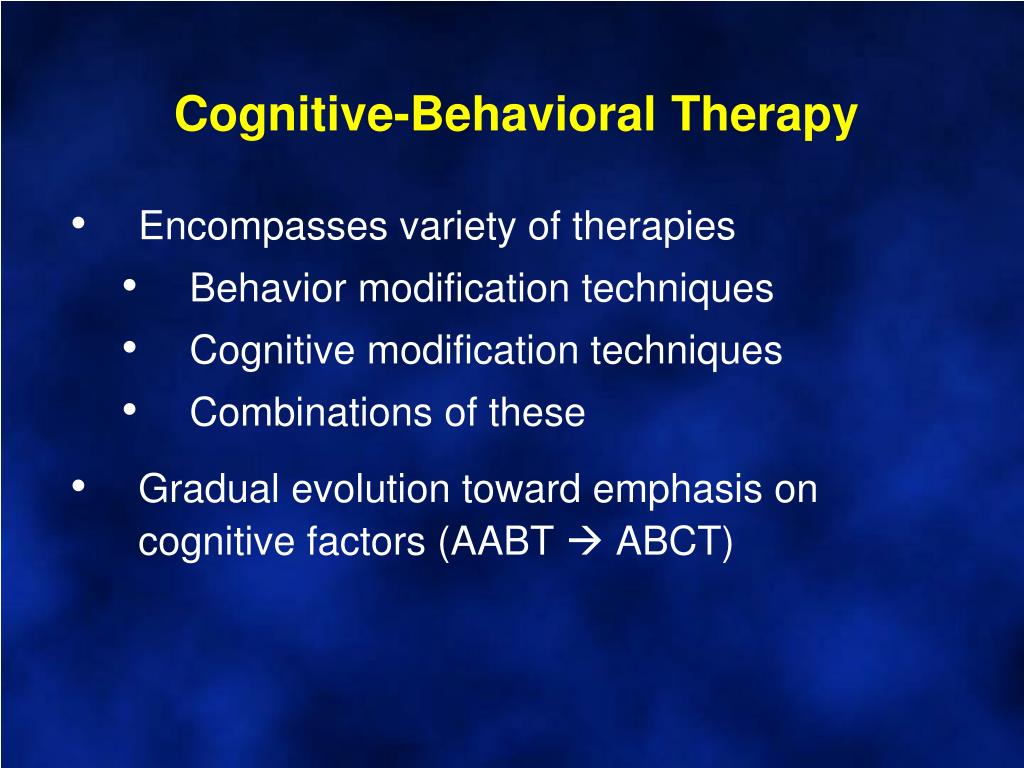 nine0063
nine0063
This text is an introductory fragment.
Chapter 1 Psychological assistance - in psychoanalysis, behaviorism, cognitive therapy and existential-humanistic psychology
Chapter 1 Psychological Help - in Psychoanalysis, Behaviorism, Cognitive Therapy, and Existential-Humanistic Psychology The communication of people with each other presupposes their mutual psychological influence. This impact can be either accidental, spontaneous,
Therapies and educational strategies
Therapies and Educational Strategies At the top of the pyramid are individual types of assistance and educational strategies to help overcome specific impairments. It is important to distinguish between a single method as such and a method that is part of a complex program.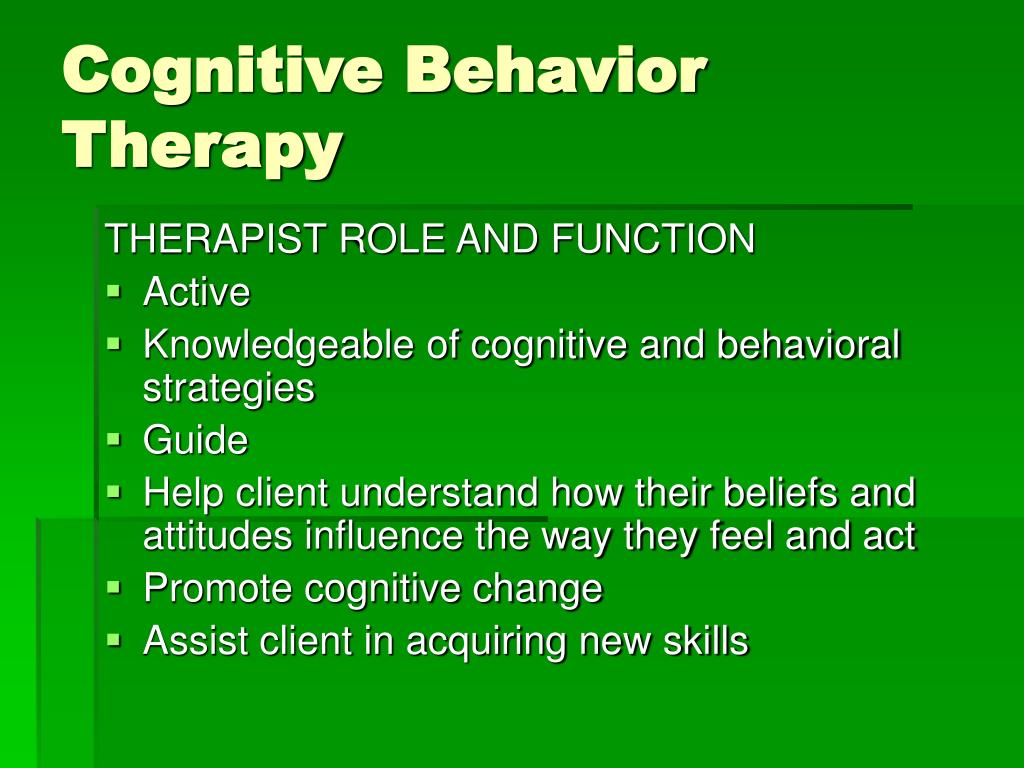
The effectiveness of cognitive therapy
Effectiveness of Cognitive Therapy Beck and colleagues compared the effectiveness of cognitive therapy for neurotic depression. Patients were randomly divided into two groups - pharmacotherapy and cognitive therapy. Cognitive therapy continued
Theory of Cognitive Therapy
Theory of Cognitive Therapy Cognitive, emotional and behavioral channels interact in therapeutic change, however, cognitive therapy emphasizes the leading role of cognitions in inducing and maintaining therapeutic changes. Cognitive changes
Application of cognitive therapy
Applying Cognitive Therapy Cognitive therapy is a present-centered approach. She is directive, proactive, problem oriented. Cognitive therapy was originally used on an individual basis, now it is used in family therapy
Using Cognitive Therapy to Deal with Errors
Applying Cognitive Therapy Methods to Combat Errors Methods of cognitive therapy allow you to cope with each of these errors.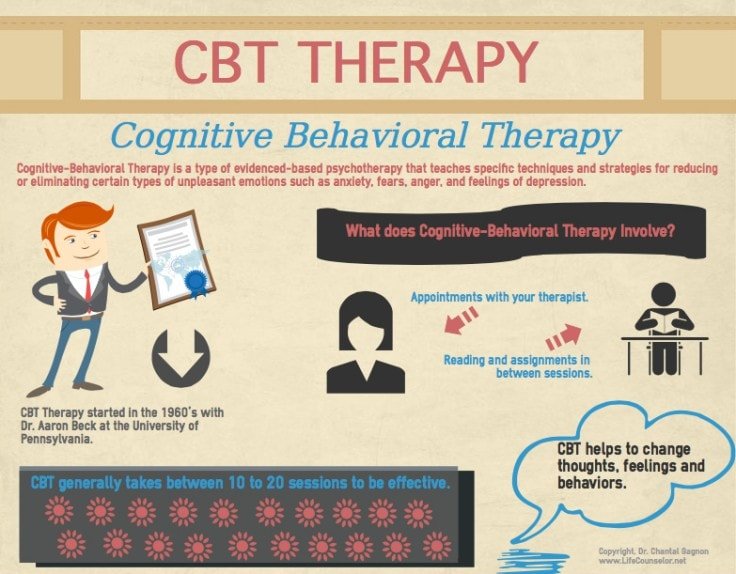 They have proven effective in combating the manifestations of emotional extremes in people who have suffered so much from
They have proven effective in combating the manifestations of emotional extremes in people who have suffered so much from
Basic principles of social-cognitive theory
Basic principles of social - cognitive theory We begin our study of Bandura's social-cognitive theory with his assessment of how other theories explain the causes of human behavior. Thus, we can compare his point of view on a person with others. Over
THERAPY GOALS AND RESPONSIBILITIES
OBJECTIVES OF THERAPY AND RESPONSIBILITY OF PATIENTS When we recommend supportive psychotherapy (as well as expressive psychotherapy or psychoanalysis), it is important to achieve a clear understanding of the main goals and specific tasks during the consultation or at the very beginning of therapy.
12. TECHNICAL STRATEGIES FOR THE THERAPY OF THE NARCISSIAN PERSONALITY
12.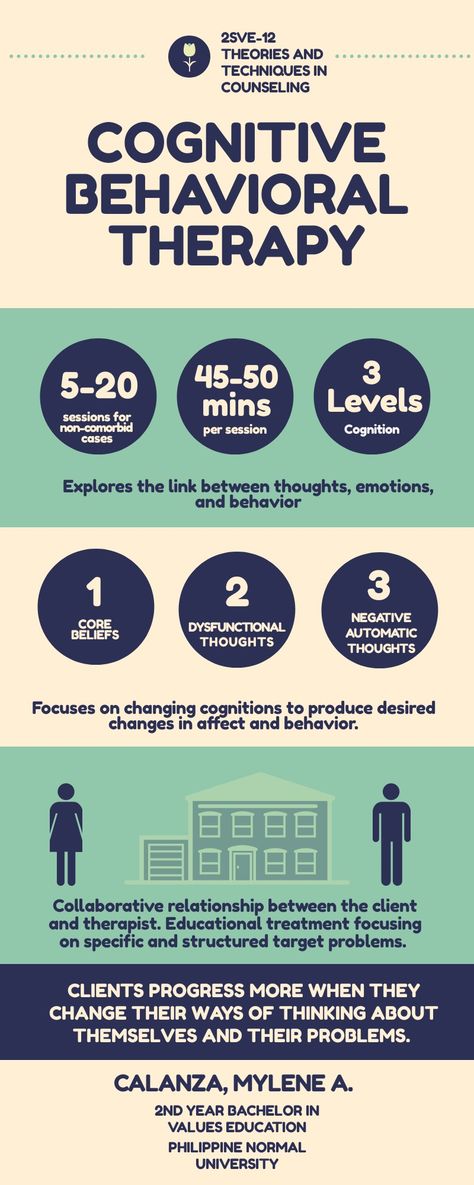 TECHNICAL STRATEGIES FOR THE THERAPY OF THE NARCISSIAN PERSONALITY The most important aspect of the psychoanalytic therapy of the narcissistic personality is the systematic analysis of the pathological grandiose self, which constantly manifests itself in the transference. A striking feature of
TECHNICAL STRATEGIES FOR THE THERAPY OF THE NARCISSIAN PERSONALITY The most important aspect of the psychoanalytic therapy of the narcissistic personality is the systematic analysis of the pathological grandiose self, which constantly manifests itself in the transference. A striking feature of
Aims of cognitive psychotherapy
Goals of Cognitive Psychotherapy The process of APD cognitive psychotherapy can be thought of in terms of a hierarchy of cognitive activity, where the clinician attempts to guide the patient to a higher, more abstract level of thought through guided discussions,
Aims of cognitive psychotherapy
Goals of Cognitive Psychotherapy The initial clinical goals of cognitive psychotherapy for NPD include establishing a collaborative relationship, becoming familiar with, or "socializing" the patient to, the cognitive model of treatment, and reaching agreement on understanding the problem and
Behavior goals
nine0062 Goals of Behavioral Therapy Behavioral therapy seeks to ensure that, as a result of treatment, the patient acquires the so-called corrective learning experience.





